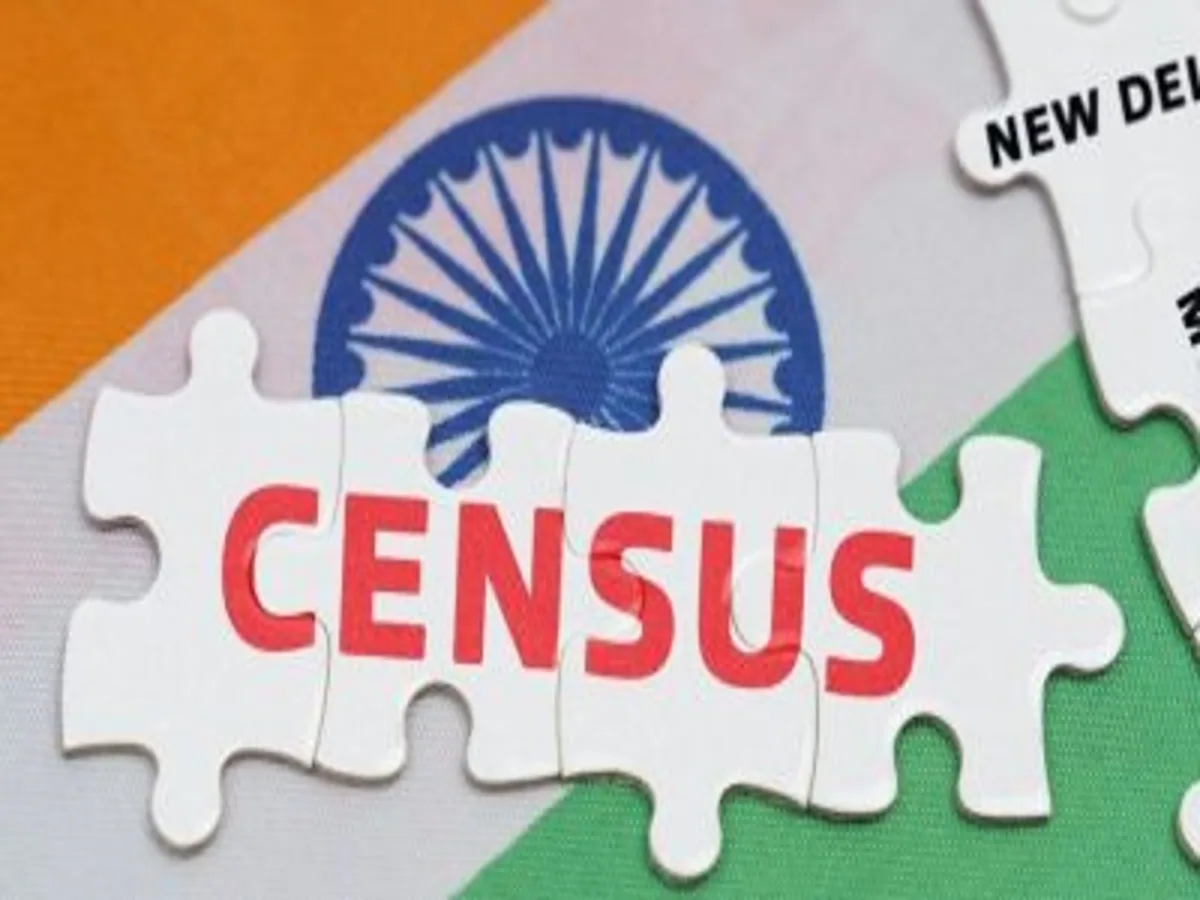
Census Must Count Sub-Caste in India’s Upcoming Digital Census
Introduction
GK & Current Affairs for CLAT | CLAT Current Affairs 2026
Powered by CLAT Gurukul – Best online coaching for CLAT
India is preparing to conduct its first fully digital Census, an exercise that holds enormous potential for accurate, metadata-driven policymaking. However, as Manish Tewari argues in The Indian Express, this opportunity could be squandered if the Census limits its social profiling to broad caste categories instead of counting sub-castes.
The author stresses that India’s social and political justice framework—enshrined in the Constitution—was designed to uplift historically marginalized communities. But the lack of detailed caste and sub-caste data since 1931 has weakened the state’s ability to ensure targeted affirmative action and evidence-based governance.
This editorial comes amid renewed debate following the Union government’s April 30 decision to exclude caste enumeration from the upcoming Census 2025, except for Scheduled Castes (SCs) and Scheduled Tribes (STs). Critics argue that without counting Other Backward Classes (OBCs) and sub-castes, the Census will fail to capture the true social composition of India’s population.
Why in News
- The Union Government recently announced that the 2025 Census will not include caste enumeration, except for SCs and STs.
- This has sparked controversy, as several political parties and social justice groups have demanded a comprehensive caste-based count, including OBCs and sub-castes.
- The debate follows Bihar’s caste survey (2023) and the Supreme Court’s recognition of the importance of socio-economic data for effective welfare distribution.
- Manish Tewari argues that technological advancements in India’s first digital Census present an unprecedented opportunity for data-driven policy design, but the government’s narrow approach risks undermining social justice objectives.
Point-wise Summary of the Article
- The Constitutional Vision of Equality
- The Constituent Assembly aimed to transform India into a modern egalitarian state based on justice—social, economic, and political.
- Articles 15 and 16 empower the state to promote social and educational advancement for backward classes, including SCs and STs.
- Articles 17, 23, and 24 abolished untouchability, human trafficking, and child labor, ensuring basic human dignity.
- However, to truly achieve equality of status and opportunity, the state must possess accurate caste data to design effective affirmative action policies.
- The Mandal Legacy and OBC Reservation
- The Mandal Commission (1980) identified 27% reservation for OBCs in public employment.
- This was based on extrapolated caste data from the 1931 Census, the last time India collected detailed caste information.
- The Supreme Court’s Indra Sawhney judgment (1992) upheld the OBC reservation and introduced the “creamy layer” concept to exclude economically advanced members.
- Yet, in the absence of updated data, the identification and targeting of genuine beneficiaries remain flawed.
- The Socio-Economic and Caste Census (SECC) 2011
- The SECC 2011, initiated by the UPA government, was the first attempt in 80 years to collect caste-linked data.
- However, the data was never officially released, with subsequent NDA governments citing methodological flaws.
- The non-publication of this data has perpetuated confusion and speculation about the real social composition of India’s population.
- Digital Census and Missed Opportunities
- The upcoming Digital Census 2025 offers cutting-edge tools for data analytics, metadata tagging, and algorithmic classification.
- Yet, the government’s refusal to include sub-caste enumeration wastes this potential.
- Without granular data on sub-castes, policy formulation will remain superficial, based on outdated assumptions about social hierarchies.
- Why Sub-Caste Data Matters
- India’s social structure is highly stratified within caste groups.
- For example, among OBCs, some sub-castes dominate employment and education benefits, while others remain unrepresented.
- Recognizing sub-caste differences ensures intra-group equity, preventing resource capture by elite sub-sections.
- Data on sub-castes can help refine reservation policies, ensuring that benefits reach the most marginalized communities.
- Historical Evidence of Sub-Caste Diversity
- The SECC 2011 identified 4,147 distinct castes, sub-castes, and lineage markers—far exceeding the 1,646 recorded in 1931.
- This explosion in classification underscores the social complexity of modern India.
- Ignoring these micro-identities through broad categories like “OBC” or “SC” amounts to administrative erasure.
- The Policy Imperative
- Tewari argues that social justice must be grounded in empirical data, not political rhetoric.
- Caste and sub-caste information are vital for:
- Designing targeted welfare schemes.
- Allocating educational and employment quotas more equitably.
- Understanding social mobility trends within castes.
- Mapping kinship and land ownership networks in rural India.
- The Role of Kinship and Social Networks
- In rural India, caste networks determine access to land, resources, and even credit.
- Without sub-caste data, policymakers cannot:
- Analyze inequality patterns within OBCs or Dalits.
- Identify newly emergent marginalized groups.
- Correlate economic deprivation with social identity.
- Government’s Current Position
- The Union Government insists that existing SC/ST enumeration suffices for policy needs.
- It cites logistical and political challenges in collecting sensitive caste information.
- However, critics argue this approach is politically motivated, aimed at avoiding redistributive pressures and new claims for reservations.
- A Case for Evidence-Based Governance
- The author advocates for an evidence-driven model of affirmative action, grounded in comprehensive caste data.
- He warns that divorcing caste from policy planning results in “abstraction,” where identity is acknowledged but not quantified.
- Data-driven understanding of caste is essential for:
- Reducing policy inefficiency,
- Improving social inclusion, and
- Avoiding tokenism in welfare programs.
- Lessons from History
- Earlier Censuses (1931, 2011 SECC) demonstrated that detailed social data aids policymaking.
- The author argues that India should embrace metadata-based caste analysis, leveraging digital platforms to:
- Map educational access,
- Track economic participation, and
- Study migration and inter-caste mobility patterns.
- The Political and Ethical Dimensions
- Tewari cautions that counting caste is not merely political; it’s ethical governance.
- Without precise data, affirmative action risks becoming performative — symbolic rather than substantive.
- He calls for transparency, accountability, and scientific rigor in the Census process.
Key Takeaways and Critical Analysis
- India’s Social Justice Framework Is Data-Dependent
- Affirmative action cannot succeed without accurate caste data that reflects ground realities.
- Digital Census Is a Missed Opportunity
- Excluding sub-caste enumeration ignores the potential of technology to analyze social inequalities algorithmically.
- Caste Erasure Hinders Development
- Failing to record sub-castes risks rendering small, marginalized groups invisible to policymakers.
- Beyond Political Sensitivities
- Caste data must be seen as a developmental necessity, not a vote-bank exercise.
- Need for Intersectional Analysis
- Linking caste data with education, employment, and income statistics can reveal intersectional inequalities (gender, region, class).
- Empirical Justice over Symbolic Equality
- The Constitution’s promise of justice can only be realized through empirical social measurement.
Conclusion
Manish Tewari’s argument captures a crucial moment in India’s data governance journey.
As the country gears up for its first fully digital Census, the government faces a historic choice:
Will it use technology to redefine social justice with precision, or will it continue to rely on outdated, generalized caste categories?
The decision to omit caste and sub-caste data undermines the very ideals of equality, justice, and representation enshrined in the Constitution.
For students preparing with the best online coaching for CLAT or exploring CLAT Current Affairs 2026, this issue exemplifies the intersection of law, governance, and data ethics — vital for understanding India’s evolving socio-political landscape.
Notes: Explanation of Key Terms
- Census:
A nationwide population count conducted every 10 years in India to collect demographic and socio-economic data. - Sub-Caste:
A smaller, localized group within a larger caste category, reflecting regional, occupational, and lineage variations. - Mandal Commission (1980):
Recommended 27% OBC reservation in government jobs based on social and educational backwardness. - SECC 2011:
Socio-Economic and Caste Census aimed to map poverty and caste demographics; data was collected but never published. - Creamy Layer:
A concept introduced by the Supreme Court in Indra Sawhney v. Union of India (1992) to exclude wealthier OBCs from reservation benefits. - Affirmative Action:
Positive steps taken by the government to improve the representation and welfare of marginalized groups. - Metadata:
Data about data — in this context, the analytical classification and relational mapping of caste information for policy use. - Digital Census:
A technology-based data collection model that uses digital devices and online systems for real-time aggregation and analytics.
This Blog is Powered by CLAT Gurukul — India’s Leading Law Entrance Prep Platform
At CLAT Gurukul, we believe in empowering future legal minds with the right blend of knowledge, strategy, and mentorship. This blog is a reflection of our commitment to quality content that not only helps aspirants stay updated but also sharpens their conceptual clarity.
Why CLAT Gurukul?
- Personalized Mentorship by Top Legal Educators
- Comprehensive Study Materials & Legal Updates
- Daily Practice Sets, Mocks & Performance Tracking
- Result-Oriented Strategy for CLAT, AILET, and CUET
Whether you’re reading this article to deepen your understanding or to stay ahead in your exam prep — you’re already one step closer with CLAT Gurukul by your side.
Join thousands of successful aspirants who trusted CLAT Gurukul and cracked India’s top law entrance exams.
Visit https://www.youtube.com/@CLATGurukul/shorts to learn more or speak to our experts now!
Note from CLAT Gurukul
At CLAT Gurukul, we are committed to providing free CLAT study material, including CLAT current affairs, legal reasoning practice sets, general knowledge updates, logical reasoning questions, English comprehension exercises, and more — all curated by top mentors.
Our blog section is regularly updated with high-quality CLAT content tailored to match the evolving pattern of the CLAT UG exam. Whether you’re looking for CLAT 2026 current affairs, CLAT legal reasoning passages, or mock practice sets, we have you covered.
We believe in open-access learning and will continue to publish free CLAT preparation resources to help serious aspirants succeed.
Explore more free content under categories like:
Best online coaching for CLAT, CLAT current affairs, CLAT GK updates, CLAT legal updates, CLAT logical reasoning, and CLAT English preparation.
For structured learning, daily mocks, and expert mentorship, visit https://www.youtube.com/@CLATGurukul/shorts — the Best CLAT Coaching in Patna and India’s most trusted platform for CLAT online coaching.
